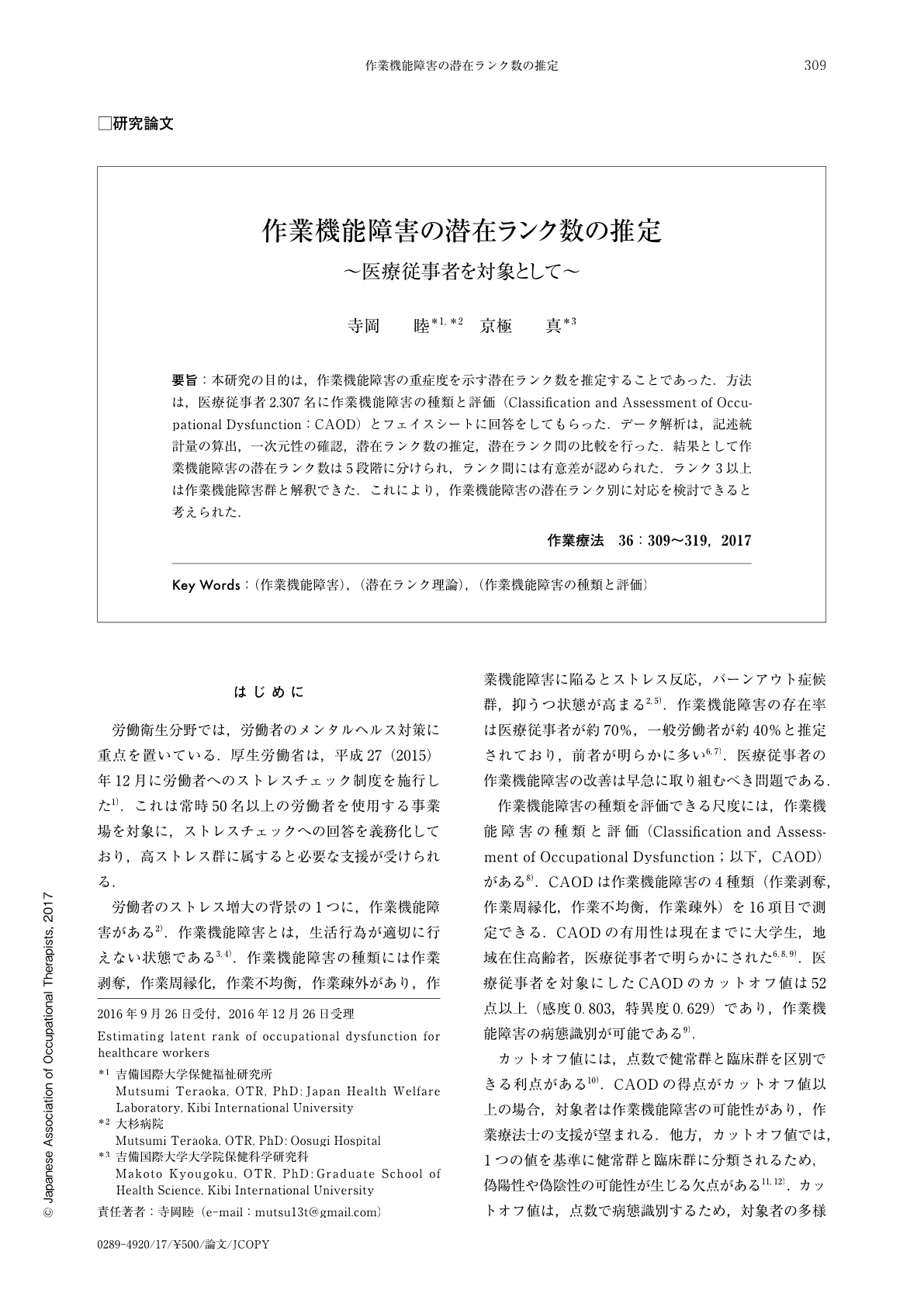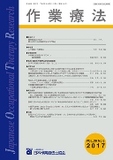Japanese
English
- 販売していません
- Abstract 文献概要
- 1ページ目 Look Inside
- 参考文献 Reference
- サイト内被引用 Cited by
要旨:本研究の目的は,作業機能障害の重症度を示す潜在ランク数を推定することであった.方法は,医療従事者2,307名に作業機能障害の種類と評価(Classification and Assessment of Occupational Dysfunction:CAOD)とフェイスシートに回答をしてもらった.データ解析は,記述統計量の算出,一次元性の確認,潜在ランク数の推定,潜在ランク間の比較を行った.結果として作業機能障害の潜在ランク数は5段階に分けられ,ランク間には有意差が認められた.ランク3以上は作業機能障害群と解釈できた.これにより,作業機能障害の潜在ランク別に対応を検討できると考えられた.
The purpose of this study was to estimate the latent rank that indicates the severity of occupational dysfunction. Participants were 2,307 healthcare workers who answered the Classification and Assessment of Occupational Dysfunction (CAOD) and demographic profiles. Data analysis included descriptive statistics, polyserial correlation, exploratory factor analysis, latent rank theory, and generalized linear modeling. As a result, the latent rank of occupational dysfunction was classified into 5 levels, and a significant difference was indicated between each latent rank. Moreover, a rank of 3 or higher is interpreted as an occupationally dysfunctional group. Occupational therapists need to consider appropriate support according to the latent rank of occupational dysfunction.

Copyright © 2017, Japanese Association of Occupational Therapists. All rights reserved.


